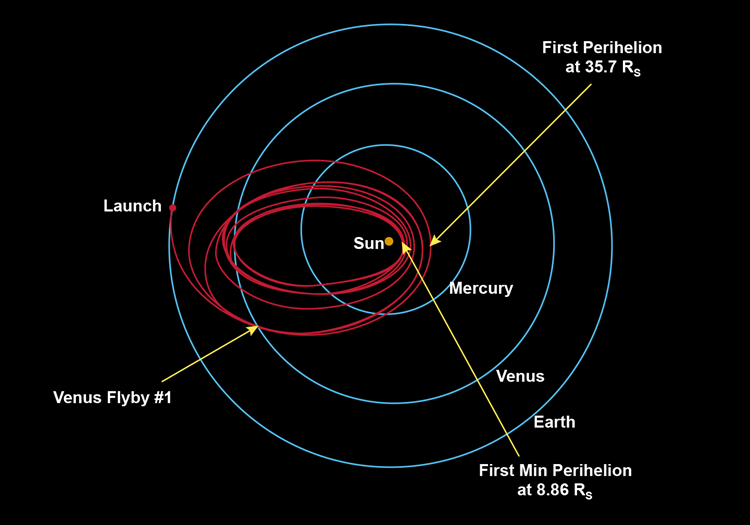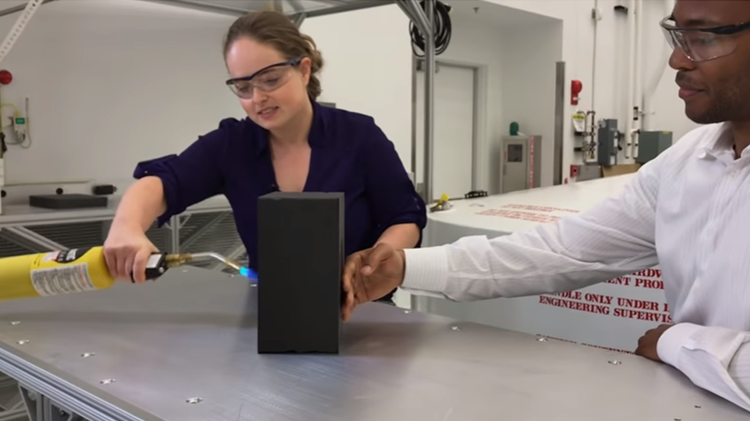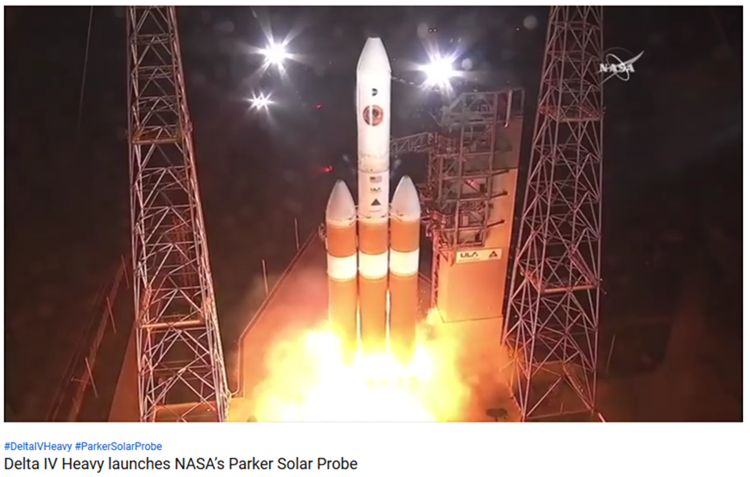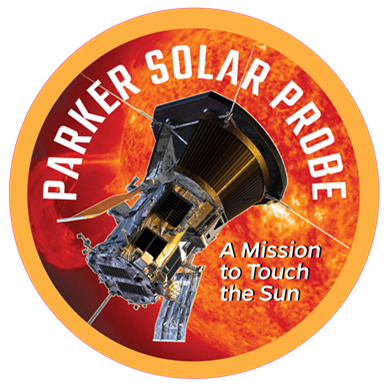On 12 August, the Parker Solar Probe (PSP) was launched from Cape Canaveral, Florida. After a Venus gravity assist flyby early October, the probe will have its first close encounter with the Sun in November this year, at a distance of about 25 million km. Another 6 Venus flybys will gradually alter its trajectory around the Sun. Hence, in 2025, when PSP will complete the last few of its total 24 scheduled orbits, its closest distance to the solar surface will be about 6 million km. It will have a speed of about 192 km/s, the fastest man-made object ever, Helios-B currently being the record holder (70 km/s).

Coming so close to the Sun, the probe will have to fully endure the scorching heat from our nearest star. The solar radiation will indeed be more than 400 times as intense as is experienced by satellites orbiting the Earth. As such, the probe has been equipped with a carbon-based heat shield to keep it in the shadow, and water-cooled solar cells to drain away the heat. Outside sensors will allow to spacecraft to orient itself correctly to the Sun. It has onboard software to take autonomously the correct decisions, because when something goes wrong so close to the Sun (i.e. so far from Earth), the operators won't have enough time to properly deal with the situation. Underneath are 2 engineers from the Johns Hopkins University Applied Physics Lab (JHUAPL; Betsy Congdon and Curtis Wilkerson) demonstrating the impressive capabilities of the heat shield. On the torching side, temperatures reach several hundreds degrees, whereas at the other side it remains "nice and cool".

The primary science goals for the mission are to trace the flow of energy and understand the heating of the solar corona (the Sun's outer atmosphere) and to explore what accelerates the solar wind. Parker Solar Probe has three detailed science objectives:
- Trace the flow of energy that heats and accelerates the solar corona and solar wind.
- Determine the structure and dynamics of the plasma and magnetic fields at the sources of the solar wind.
- Explore mechanisms that accelerate and transport energetic particles.
It's no surprise that solar and space weather researchers are looking forward to the wealth of data PSP will produce. Fittingly, the probe was named in honour of Eugene Parker, who is still alive (he actually attended the launch) and is considered to be the godfather of the solar wind which he predicted 60 years ago in 1958.

Good luck, Parker Solar Probe!

Further reading, watching and listening
- NASA website
- Website from the JHUAPL
- There's also a lot of information at Wikipedia
- Interviews (in Dutch) with Dr David Berghmans from the Royal Observatory of Belgium: radio (VRT) and TV (VTM)
- The website of the Centre Spatial de Liège (CSL), which has contributed to one of the instruments (WISPR) onboard PSP (in French)
- Eugene Parker's seminal 1958 paper





